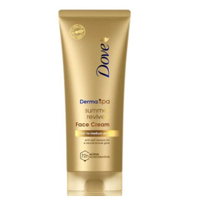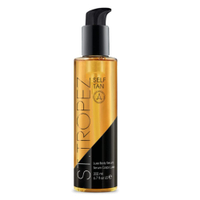These are the best fake tans for pale skin if you want streak-free, natural-looking results
Our beauty team reviews the best fake tan for pale skin buys for reliable, sunkissed results

Like any other self tan, the best fake tan for pale skin should be natural-looking, easy to apply and well-lasting. But a good formula for pale skin, specifically, must also work well on a very light canvas, as any hint of orange will be very visible.
The key to a great bottle tan is not looking like it came from a bottle; the best self tan should look natural – as if you’ve just stepped off a yacht in the South of France, without the actual sun exposure. Leading tanning expert James Harknett says the best approach is to start slowly: “I always advise starting with the best gradual tan if you have very pale skin,” he tells us. “Gradual tans contain less DHA, which is the ingredient in your product that provides a sunless glow.”
Harknett adds that a shade your skin would never naturally become won't compliment your hair and eye colouring, and can look outdated as a result. So our experts have tested several formulas to find those that truly work well on pale skin to share reviews of the top formulas for this very guide. From soft and gradual formulas to the best instant tans that require minimal commitment, these convincing formulas will leave even the palest complexions with a natural and healthy-looking glow.
Best fake tan for pale skin deals
These deals are checked daily and we will continue to do so to ensure that all of the products below are still in stock, still discounted and, most importantly, are the very best deals around at the moment.
For those looking for a natural yet buildable, easy-to-apply tan, this Dove Gradual Tan Lotion is your answer - and it now has 43% off.
Enjoy a 30% discount on Coco & Eve's Sunny Honey tanning foam, which is designed to blur the skin and offer a natural-looking golden glow in just two hours. The lightweight formula is infused with the likes of lotus extract, raw coconut, mango, fig and cocoa, to help hydrate the skin and tackle signs of ageing.
We'll admit, this self-tan serum from St Tropez doesn't immediately look like it's discounted. However, after doing some digging, this buy still boasts a £35 price tag when shopping via other retailers. So, why not nab a bottle for 64% less? It seems like a no-brainer to us.
The best fake tan for pale skin, reviewed by our beauty team
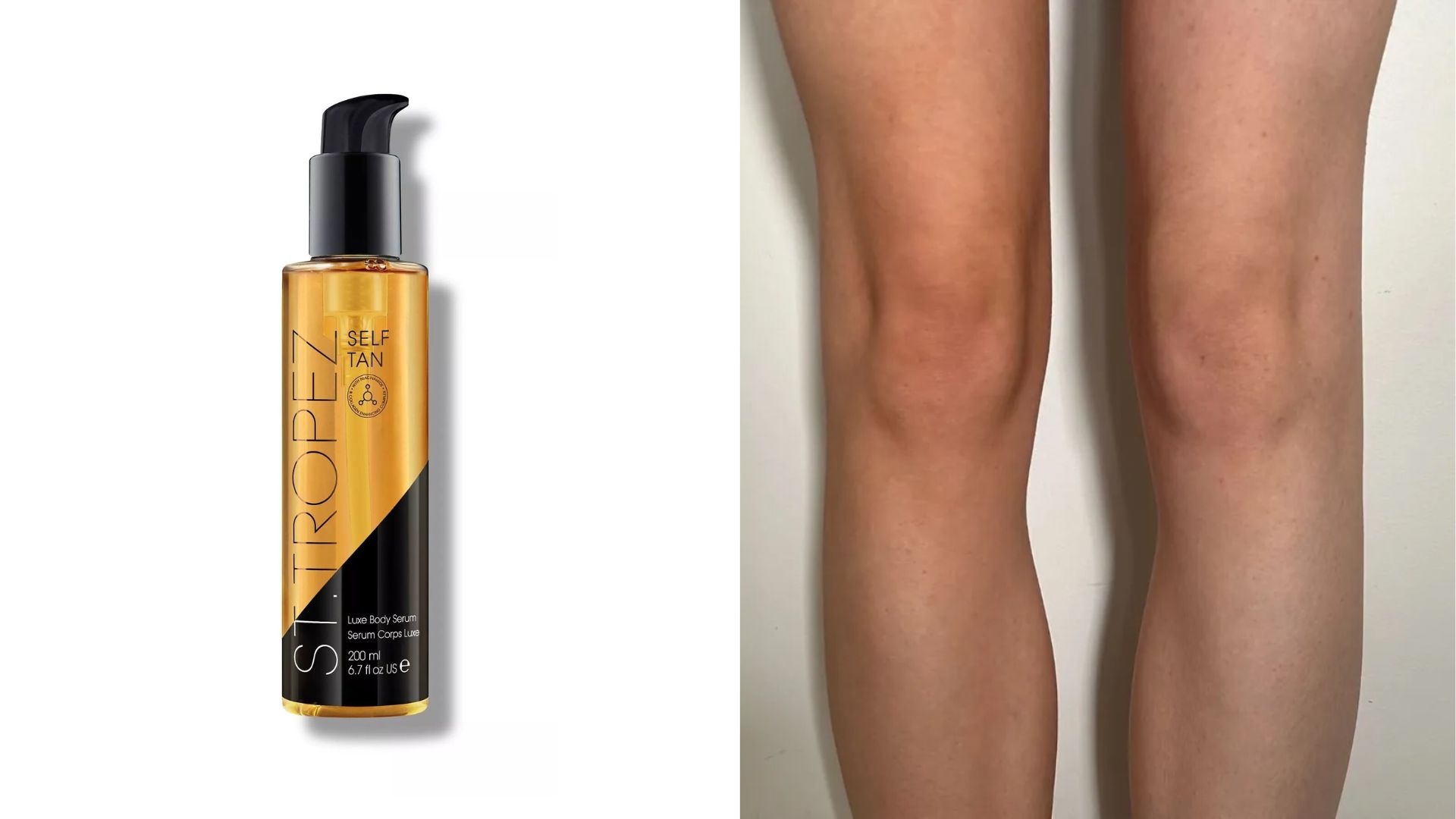
RRP: £35 for 200ml | Type: Body serum
Reviewed by: Jess Beech and Sennen Prickett
Our collagen starts to deplete at age 25, but this formula is enriched with a collagen-enhancing complex that aims to help restore some of this lost firmness. There's also hyaluronic acid to plump and hydrate the skin. All this not only means your skin will look better, but your tan will stick around for longer, too.
Jess: In true St Tropez style, this formula feels very luxurious, with a serum-like texture that glides onto skin like silk. It doesn’t have a guide colour, but it does have a golden sheen that not only makes you feel like an extra in a gorgeous perfume advert, it also means you can easily see any areas you might have missed. Do also note you need to sleep in this tan and it’s not super deep, though you can re-apply it after 24 hours should you wish to deepen the colour.
Reasons to buy: Nourishes the skin, fades evenly
Avoid if: You want something bolder or prefer a formula with a guide colour
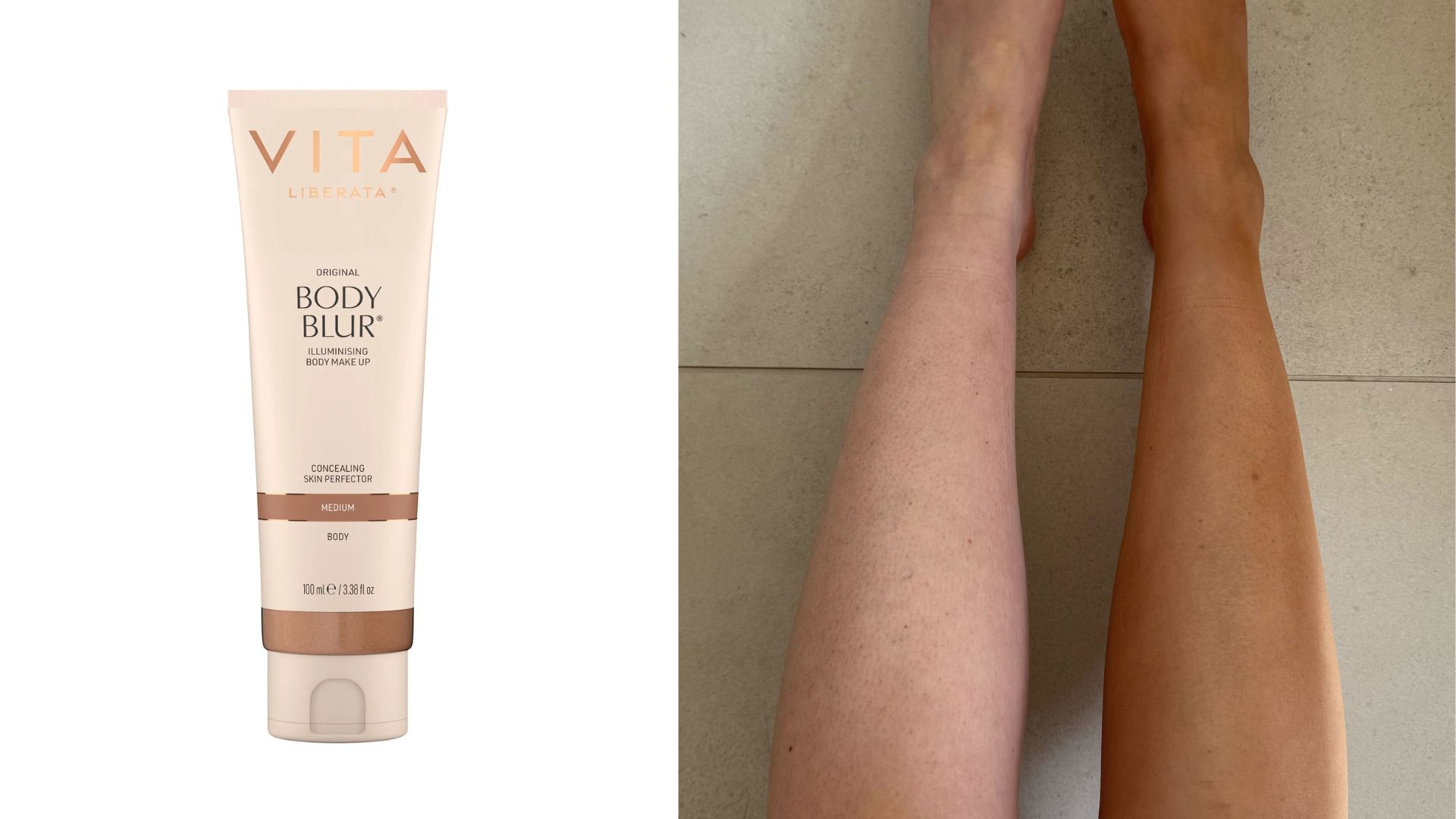
RRP: £33 for 100ml | Type: Instant
Reviewed by: Stephanie Maylor
This dense, mousse-like cream is akin to using a real-life filter on the skin, blurring the look of thread veins, dry skin on legs, bruises, mottled skin and so on. There are five shades to choose from, with Lighter-Light and Light probably the best options for paler skin tones.
I've used this product for years and find the formula always goes on smoothly and evenly with a mitt. It delivers a subtle hint of colour that's more about creating a flawless, perfected finish rather than a noticeable bronzed look. I love its smooth and uniform finish, which glosses over any faint bruising and/or freckles on the shins. What's more, for an instant formula it has shockingly good staying power. It never rubs off on clothes – a real win – and doesn't streak (not even after getting drenched on the school run).
Reasons to buy: Washes off easily, blurs skin imperfections, smooth application and finish
Avoid if: You want a longer-lasting tan; expensive for wash-off formula
RRP: £20 for 200ml | Type: Mousse
Reviewed by: Jess Beech and Fiona McKim
We talk a lot about skin tones when it comes to fake tan, but not so much about undertones – until now. Bondi Sands has developed a first-of-its-kind (and still affordable) tanning range designed around undertones as well as skin tone. There are four shades – Sapphire for a natural, cool tone, Emerald for a deep olive tone, Caramel for a warm, golden tone and Magenta for a rich, deep tone.
Jess: The guide colour takes a little getting used to as it has a blue – almost grey – tinge that initially made my skin look quite pallid. But there’s science at play here, as this counteracts the orange hues that those with pale complexions really want to avoid. I applied it with a mitt, which was a doddle, and showered it off after one hour. You can leave it on for up to three hours for a deeper tan, but I didn't test this out. The formula takes around eight hours to fully develop into a healthy-looking glow and I am pleased to report it left no streaks or patches in its wake.
Reasons to buy: Looks natural, great for cooler skin tones
Avoid if: You want something completely non-sticky
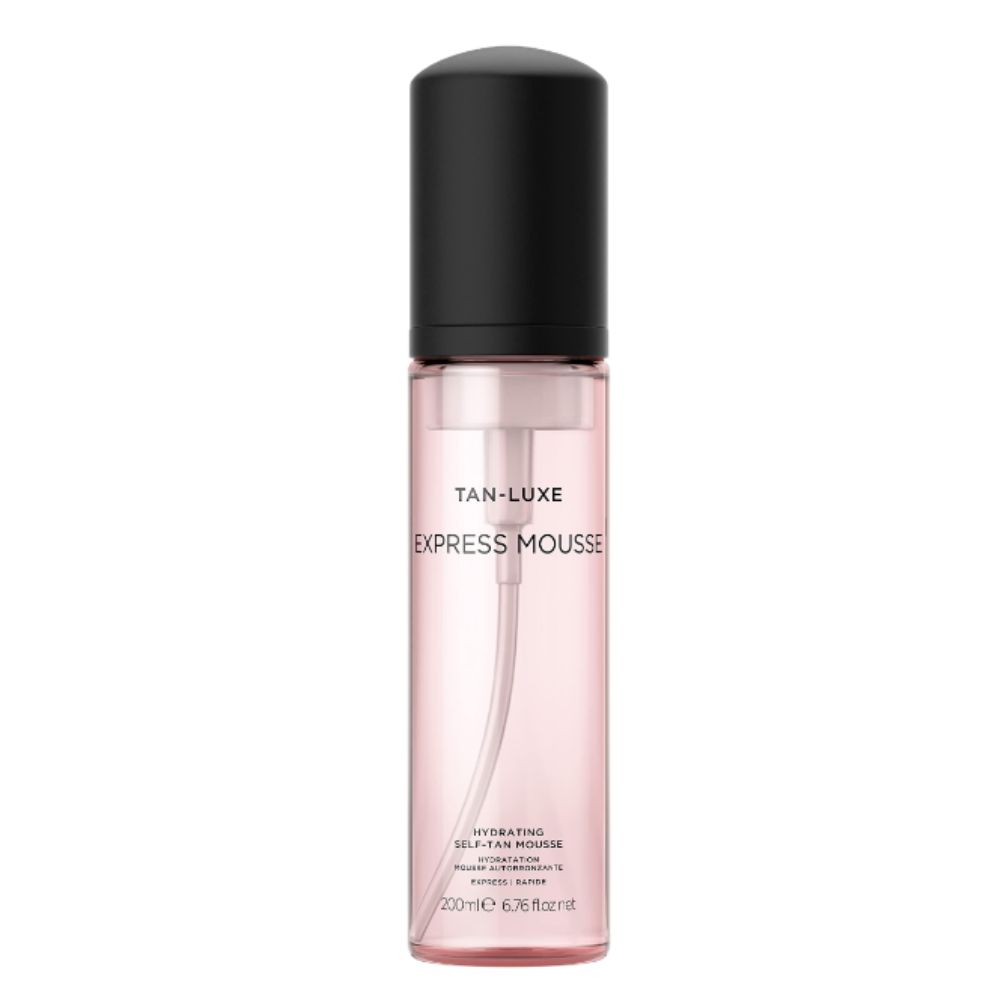
RRP: £37 for 200ml | Type: Mousse
Reviewed by: Jess Beech
Tan-Luxe is built on the ethos that tanning doesn’t need to be a messy, sheet-staining and sticky experience. This formula is clear and I found has a slightly sweet scent. A little goes a long way, and it doesn’t dry too quickly, which means there's plenty of time to make sure you have covered every little patch of skin. As there's no guide colour, however, you'll need to over-compensate with extra buffing (as with any guide-free formula).
This is an express mousse and I left it on for between 30 minutes and one hour, finding 45 minutes to be the sweet spot for a noticeable-yet-natural-looking tan on pale skin – and it genuinely lasts for a full week. A great option if you're nervous about self tanning.
Reasons to buy: Easy to use, develops fast, lasts well, won't stain sheets
Avoid if: You prefer a formula with a guide colour

RRP: £9.99 for 250ml | Type: Gradual
Reviewed by: Jess Beech
Isle of Paradise as a brand is an excellent destination for first-time self-tanners (and devout tanners alike) with pale skin. The pink colour-correcting range has cemented itself as some of the best natural-looking fake tans on the market at fairly accessible prices to boot. But it's the most recent addition, the Daily Self-Tan Lotion to the brand that deserves your attention for a seriously low-commitment tan.
Firstly, the lotion itself has the loveliest lightweight texture that I would happily slather across my skin with or without the inclusion of DHA; it's incredibly skin-quenching and absorbs nicely without any sticky residue. One application of Light/Medium subtly warms a very pale complexion nicely, which can then be built upon in the following days or alternated with a non-tan body cream if your goal is to maintain that (a Medium/Dark option is also available for those who want a deeper glow.) And for less than a tenner? It's practically impossible to fault.
Buy if: You want a subtle or buildable tan
Avoid if: You want instant results
RRP: £28.50 for 100ml | Type: Lotion
Reviewed by: Jess Beech
This formula is silky, nourishing and, to me, closer to a moisturiser than a fake tan. It’s so softening (thank shea butter and jojoba oil for that) that it left my skin with a nice sheen and helped reduce itchiness, too. My only gripe is that it only dispenses a teeny amount of product at a time, so it took quite a while to squeeze out enough to coat my entire body. It has a lovely, fresh apricot scent and dries quickly, so you don’t have to worry about feeling tacky post-application before getting into bed or going about your day.
This is the kind of product I like to call a "take-the-edge-off" tan. There is nothing wrong with pale legs, of course, but sometimes the luminosity (especially post-winter) doesn’t fill one with confidence for shorts season. This tan gives the skin a super subtle glow that replicates the look of spending an afternoon in the sunshine – softening the starkness.
Reasons to buy: Feels lovely on the skin, sustainable ingredients
Avoid if: You want the easiest possible dispensation

RRP: £26 for 200ml | Type: Foam
Reviewed by: Stephanie Maylor
I loved this fake tan's soft vanilla scent, which is admittedly quite sweet. The mousse itself comes out a little muddy-looking and has a greenish tinge, but this soon blends into a subtle bronze as you slather it across your limbs. This green-grey pigment is what neutralises any orange tones so the resulting tan looks more natural, which I can certainly attest to.
Medium is the lightest shade on offer here, but it is still suitable for paler complexions; I found it easy to customise simply by rinsing off the guide colour a little earlier (two hours for the faintest hint of colour, or overnight for a deeper glow). The effect was smooth, streak-free and even; it helped to gloss over some dodgy tan lines of summers past. Want to know more?
Read our beauty contributor's full Coco & Eve tan review
Reasons to buy: Fades nicely, vanilla fragrance
Avoid if: You don't like sweet scents

RRP: £39 for 65ml | Type: Cream
Reviewed by: Jess Beech
Wondering how to self tan your face to get natural-looking results? This is the world’s first barrier-repairing, gradual tanning facial moisturiser, packed with amino acids and lipids. The cream itself smells a bit like sun cream and its texture is rich, meaning we think it's probably best applied before bed. Our skin felt instantly plump and smooth to the touch and we saw a healthy glow creep in after a few hours.
As with any gradual tan, the depth of colour is largely in your hands. They say that the level of DHA in the cream (4.5% to be exact) is just the right amount to be used daily. However, I made the mistake of using my regular glycolic acid exfoliant between applications, which did remove the tan and make it look a little patchy – but this was easily fixed with another evening application to even things out again. Overall, I appreciated the healthy, radiant glow it delivered.
Reasons to buy: Customisable; barrier-repairing
Avoid if: You use punchy actives, as this may cause streaking

RRP: £18.99 for 225ml | Type: Mousse
Reviewed by: Jess Beech
This whipped formula has a beautiful coconut scent that, we found, goes some way to disguise the slight fake tan smell. The mousse is also tinted, meaning you can see exactly where to buff and it melts into the skin for impressive coverage across your limbs.
Another major plus here is that this formula dries quickly, so you don't have to wait around for half an hour feeling sticky and tacky. If it's a subtle hint of colour you're after, hop in the shower after an hour. Otherwise, leave it on for six, then rinse off for sunkissed skin. The only downside is that we found that it had started to fade in patches after a few days. However, if you know with how to remove fake tan, you'll be aware that this is nothing a good scrub or tan eraser won't fix, leaving you ready to start the process again.
Reasons to buy: Long-lasting, smells like coconut
Avoid if: You want something that fades very evenly with time
How we tested the best fake tans for pale skin
Some of the best fake tan for pale skin options that we tested for this guide
In order to put together a guide to the very best fake tan for pale skin buys, complete with honest reviews, we tried more than 20 different formulas. We also drew upon our experience of old favourites that we have used and relied on for years.
When testing, we observed each one for several days to assess how they faded over time. When deciding which tans were the best for paler complexions, we judged them based on the following factors.
- Ease of application: Whether you’re a tanning expert or a novice, you want a fake tan formula to be intuitive and simple to apply.
- Finish: There’s little more frustrating than waking up to a patchy, streaky tan. All the best fake tan for pale skin on this list delivered an even, convincing finish.
- How they faded: We want our tan to deliver past day one, so we monitored how well results lasted over a week.
- Longevity: Here today, gone tomorrow? The results of some tans are more short-lived than others.
- Scent: Good news – applying fake tan no longer has to involve a heavy "eau de biscuit" fragrance. The latest formulas utilise innovative methods to reduce and mask the tell-take fake tan smell.
Once we felt we’d sufficiently put a tan formula through its paces, we ran a bath, slathered on one of the best body exfoliators and moved on to testing the next with a nice, clear canvas.
How to choose the best fake tan for pale skin
If you want to learn how to fake tan like a pro, particularly when you’re working with very pale skin, follow these expert tips to master the art of believable bronzing.
- Think about the formula type: "For paler skin tones, I recommend using a light, hydrating formula which you can build up over time," advises Jules Von Hep, professional tanner and the founder of Isle of Paradise. "Tanning waters and oil mists are the most hydrating tan possible. The trick is to apply liberally; your skin should be drenched after application, then blended with a mitt swept gently over the skin." This will also prevent the patchiness that may leave you asking, is fake tan bad for your skin?
- Opt for gradual: "If you are pale and looking for a natural, sun-kissed glow, avoid darker shades of tan with higher levels of DHA as this will add too much red pigment to the skin," says St.Tropez's Tanning & Skincare Expert Michaella Bolder. "I love using gradual tan for a really subtle glow on paler skin. If you apply tan every 3-4 days, by the time you get to the richest tone you’ve already begun to wash it off during showering. I like to then reapply around day three or four to help maintain a hydrated and consistent, gorgeous-looking tan."
- Know your undertone: This can also inform your choice of fake tan. "The undertone of your skin is what you would see as your natural skin tone when you haven’t been in the sun for around six months," explains Bolder. "Paler skin types can often have a cool blue and sometimes a hint of red undertone. Olive skin tones may see more of a yellow or grey undertone that will take lightly to the sun. Darker skin tones can be a mix of blue, red, and yellow undertones." This goes for picking the best bronzer for fair skin and foundation, too.
How to apply fake tan: Tips for beginners
Once you've found a formula that both suits your pale skin and works with your lifestyle (in terms of ease of application and any maintenance), it's time to get going with the application. Follow the following golden rules from our experts and tanning pale skin will be a breeze.
- Prep well: "Paler skins can really catch the tan in dry areas," says Harrington. "Scrub and moisturise pre-tanning application. I always apply a balm or moisturiser on hands, elbows, knees, and feet to avoid the tan catching, even if I am using a gradual tan." (If the worst happens and you forget your barrier cream, read our beauty editor's guide to how to get fake tan off hands.)
- Protect lighter hair: Lighter hair colours, like blonde, can easily be stained by fake tan, so it's important to protect these areas. "Keep your hair away from your face with a decent-sized towelling headband," says Harknett. "Protect your eyebrows, too, with a hint of Vaseline or barrier cream."
- Start slowly: On this kind of complexion, it’s a good idea to start with a gradual, or controllable express tan, first to avoid going overboard. “Tanning is about logic,” says Von Hep. “The more tan you add to the skin, the deeper the end result will be. If you’re a first-time tanner, apply just one light layer to the skin and get used to the colour change you see after the tan has developed. If you want to go deeper next time, just add more during application."
- Always use a clean mitt: A must! Not only is a clean mitt more hygienic, but you won't be sweeping any residual tan formula across your skin along with your fresh product. And said sweeping motions are key: keep on smoothing away to ensure an even, streak-free finish.
- Don't use a new fake tan before a special day: When self tanning ahead of a big event or special occasion, always use a tried-and-true formula. "Once you have found a product that you really like, and that suits both your skin type and your skin tone, then you can tan with more confidence," says Harknett.
Our experts on the best fake tans for pale skin

James Harknett is a tanning expert with over two decades of experience and has a spray tanning residency at the W London hotel.
Jules Von Hep is an experienced tanning expert and the founder of self tan and bodycare brand Isle of Paradise. With more than 15 years of experience in the industry, he's also tanned many a celebrity in his time.
Amanda Harrington is a makeup and body artist and the founder of at-home salon service InParlour. As well as her eponymous tanning brand, she is also known for creating The Bespoke Body Contouring Technique by Amanda Harrington®.
Michaella Bolder is a master facialist, as well as a tanning expert and brand ambassador for St Tropez.
Your best fake tan for pale skin FAQs, answered by the experts
Does fake tan work on very pale skin?
Fake tan absolutely works on very pale skin, but you'll probably want to avoid an intense formula if your end goal is natural-looking results. “If you have pale skin and opt for a dark tan, then it’s likely that your result will look unnatural," confirms Bolder. "Gradual tanning solutions are a good option as they enable you to tailor your tan result by applying one layer over a few consecutive days until you achieve your desired glow.”
The other issue when tanning very pale skin is that there’s less margin for error, as streaks and patches are more noticeable on a lighter skin tone. Therefore, “It’s really important to make sure you exfoliate thoroughly beforehand and sweep some oil-free moisturiser over drier areas like elbows, knees and ankles," says Harknett.
What fake tan is best for pale skin with pink undertones?
Your skin's undertone is the overall hue of your skin and pale skin will fall into one of three categories – warm (golden or yellow) cool (pink, red or blue), or neutral (a combination of both).
Often, skin that is very pale with cool undertones probably wouldn’t naturally tan a deep and warm golden colour naturally, which is worth keeping in mind when choosing a faux glow formula. Colour-correcting formulas work to neutralise these tones for a more natural-looking result – Isle of Paradise and Bondi Sands are two brands that offer these kinds of formulas in green and blue.
Sign up to our free daily email for the latest royal and entertainment news, interesting opinion, expert advice on styling and beauty trends, and no-nonsense guides to the health and wellness questions you want answered.
Jess Beech is an experienced fashion and beauty editor, with more than eight years experience in the publishing industry. She has written for woman&home, GoodtoKnow, Now, Woman, Woman’s Weekly, Woman’s Own and Chat, and is a former Deputy Fashion & Beauty Editor at Future PLC. A beauty obsessive, Jess has tried everything from cryotherapy to chemical peels (minus the Samantha in Sex and The City-worthy redness) and interviewed experts including Jo Malone and Trinny Woodall.
- Fiona McKimBeauty Editor, womanandhome.com
- Sennen PrickettDigital Beauty Writer
- Lucy Abbersteen
- Stephanie MaylorBeauty Editor
